THE 7TH.
Immigrants , under aged, bad health, little oral hygiene , bad teeth, beyond their endurance, hardly any Americans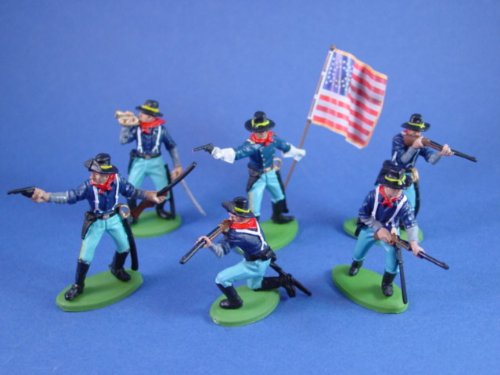
bad bones, aged beyond their years as they rode into the battle of the valley of death.
Custer and the 7th cavalry were demolished by Dakota fighting tactics General Crook was also defeated at the Battle of Rosebud
General Crook was also defeated at the Battle of Rosebud days prior to
the Little Bighorn.
days prior to
the Little Bighorn.  The U.S Cavalry fought in skirmish lines just as
they did during the Civil War. Who in their right mind fights like
that?…
The U.S Cavalry fought in skirmish lines just as
they did during the Civil War. Who in their right mind fights like
that?…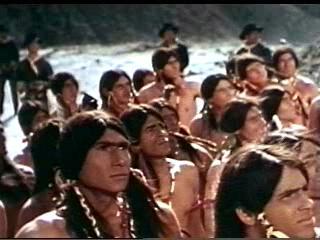 The Dakota were masters at prairie battle tactics and used
camoflage.
The Dakota were masters at prairie battle tactics and used
camoflage. 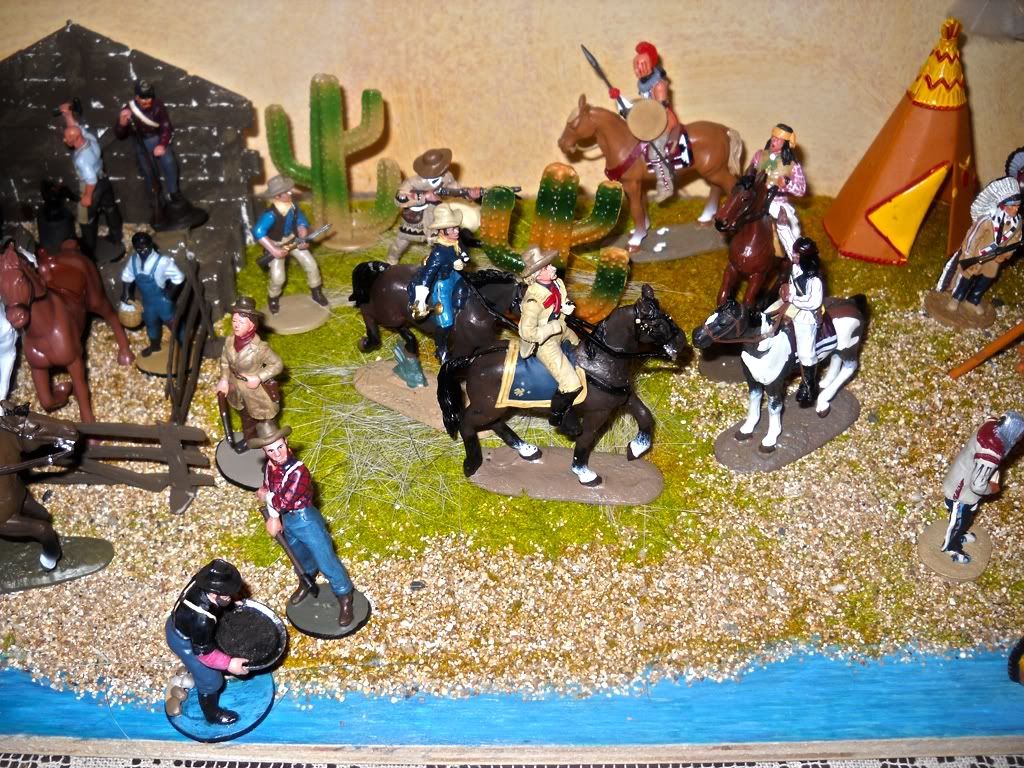 Read the officers accounts of the Battle of the Rosebud.
Read the officers accounts of the Battle of the Rosebud.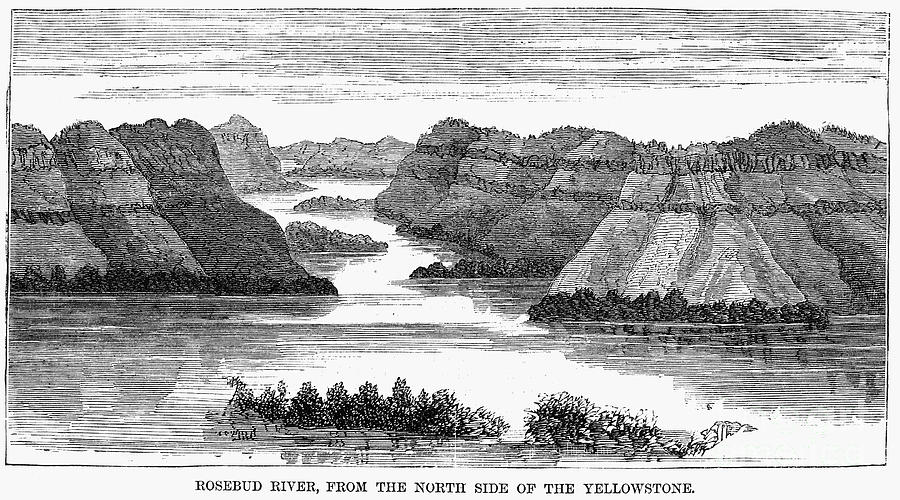 The U.S officers had no idea how fight against the Dakotas.
The U.S officers had no idea how fight against the Dakotas. charbens more like real 7th cavalry with a bit of conversion
charbens more like real 7th cavalry with a bit of conversion
They relied on Crow scouts to reveal tactics and positions.
Your average image of the Dakota warrior is based on hollywood movies. The U.S never defeated the Dakota in battle.The plains indian fought up close and kept his friends close but his enemy even
The U.S never defeated the Dakota in battle.The plains indian fought up close and kept his friends close but his enemy even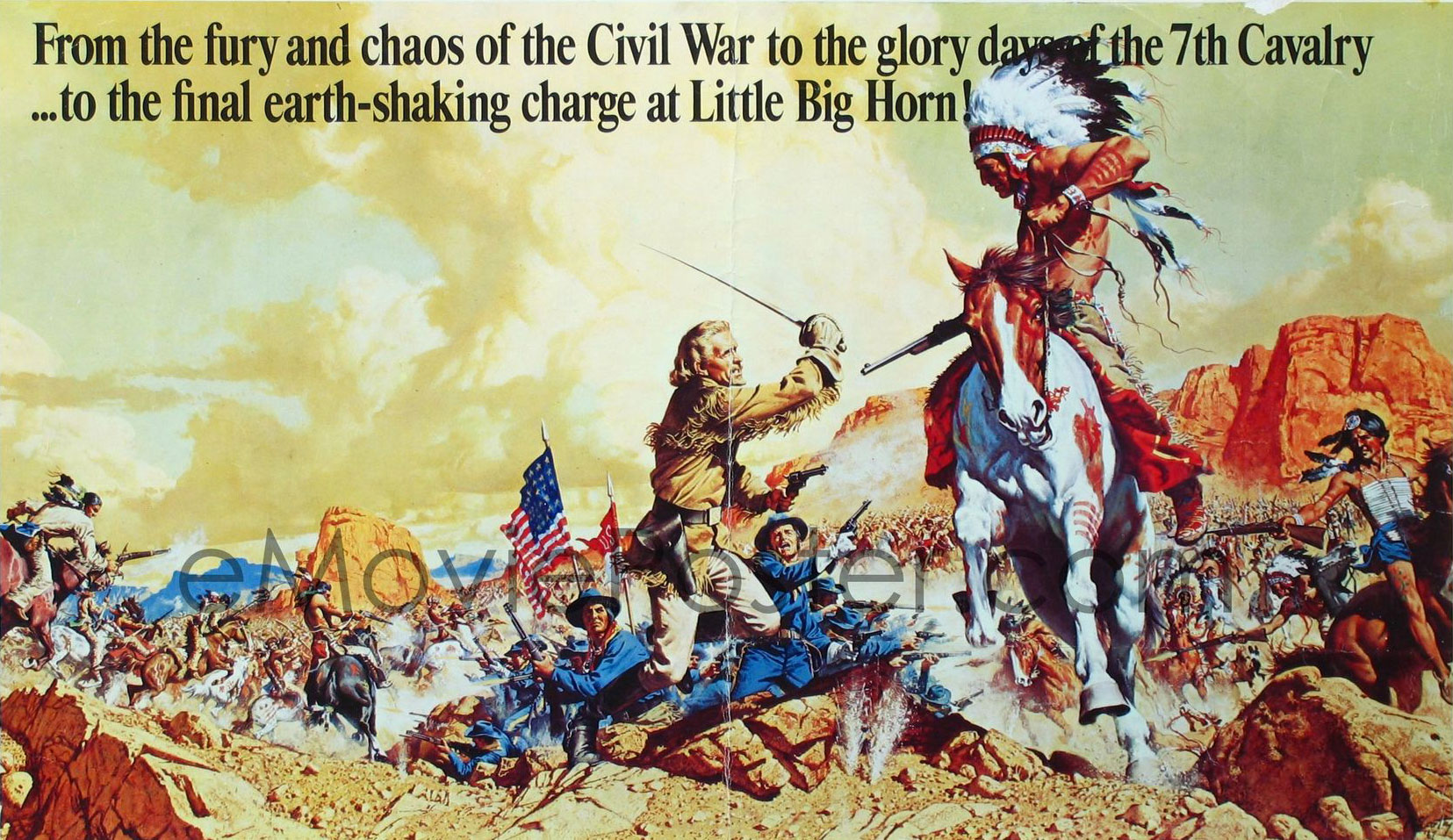 closer. Lakota and Cheyenne warriors were generally quick killers and didn't go
in for a lot
closer. Lakota and Cheyenne warriors were generally quick killers and didn't go
in for a lot of torture, though they certainly mutilated the dead
afterwards. When Fanny Kelly
of torture, though they certainly mutilated the dead
afterwards. When Fanny Kelly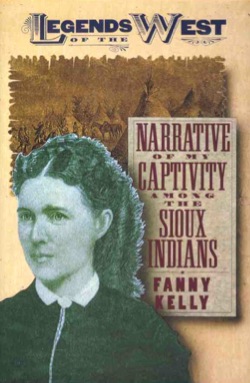 was captured by the Lakota in 1864, they
dragged her off into a teepee — and made them teach her how to read. She
appears never to have been raped and when she owned a house in
Washington she invited any Lakota who showed up with his wife to stay
over. Perhaps the greatest myth of the American West is that Indians
were "savages"
was captured by the Lakota in 1864, they
dragged her off into a teepee — and made them teach her how to read. She
appears never to have been raped and when she owned a house in
Washington she invited any Lakota who showed up with his wife to stay
over. Perhaps the greatest myth of the American West is that Indians
were "savages"  who did all sorts of terrible things without the
slightest provocation. This is mostly hokum , they did leave women on the savvanah with tendons cut and they did burn people alive but it seems they were not much into rape as they had all the sex they could handle with their women.
who did all sorts of terrible things without the
slightest provocation. This is mostly hokum , they did leave women on the savvanah with tendons cut and they did burn people alive but it seems they were not much into rape as they had all the sex they could handle with their women.
. Their most frequent initial response to white people was curiosity, sometimes followed by hospitality. Even when wars were in progress, Catholic priests and Quakers could circulate among the Plains tribes without fear because they were holy men who presented no threat. Once Episcopal Bishop Henry Whipple, visiting Lakota friends, got up on a cold night to bring his saddle into the teepee to prevent theft. "You didn't have to do that," his Lakota host told him. "You're the only white man around for 50 miles…."
Jamming? Perhaps. Richard Fox 'dig' in the 80's indicated near normal 'jammed case' of those recovered.
If a .50 was the standard issue in 1874, then the G-4 of the Dept of Dakota order many hundred of thousand/rounds of the wrong .45-55 cartridges. Infantry would have also been given the incorrect 45-70 for their '.50 rifle if so issued.
Uncle Sam chapter of the James Donovan/A Terrible Glory. G-4 wins wars, G3 submitted to S3 tenacity wins battles. Virtually every level
of command committed mighty errors of decision, from the President down.
tenacity wins battles. Virtually every level
of command committed mighty errors of decision, from the President down.
There a white man among the Sioux and Cheyenne at the Battle of the Little BighornThis is a question that first arose during the battle because Americans like Peter Thompson, John Ryan, William O. Taylor and an anonymous wounded survivor heard bugle calls coming from the Indian side. Kill Eagle and John Stands In Timber said the buglers were Indians, and they probably were, but the question of whether a white man was among the Indians on June 25, 1876 remains.
Asked directly in September 1876 if there was a white among the Indians that day, Blackfeet Sioux war chief Kill Eagle replied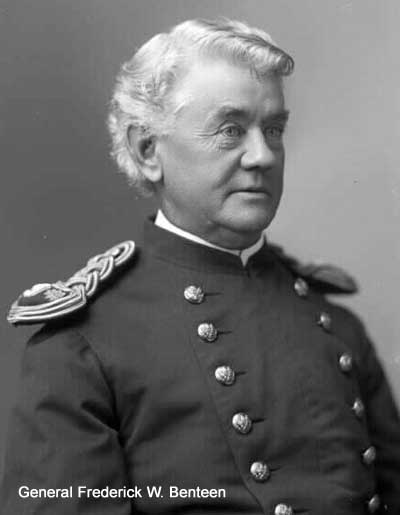 , "There were no white men in the fight or on the field. One who had been with them went to Standing Rock Agency." Quized again one month later if their was a "Spaniard" with the Indians, Kill Eagle said, "There was once a white man in camp, but he went to Spotted Tail's [Agency] before the fight."
, "There were no white men in the fight or on the field. One who had been with them went to Standing Rock Agency." Quized again one month later if their was a "Spaniard" with the Indians, Kill Eagle said, "There was once a white man in camp, but he went to Spotted Tail's [Agency] before the fight."
Oglala Sioux war chief He Dog said he "did not see any white man among Sioux." But then He Dog added significantly, "In my camp there was a Canadian half breed who spoke very good English as well as Sioux." From He Dog's testimony, it appears that this individual was present on June 25, 1876.Unreconstituted Confederate mercinary Frank Huston said, "I was a squaw man, yes; but I was not present at the Little Big Horn. I was 50 miles away headed thereto. But O -- how I would have liked to have been there! Yet as a matter of fact, there were white men there; not with the Sioux, but with other nations present. Put yourself in their place. Would you, then or now, acknowledge it?" Huston provided no details to support his assertion.
The main eye-witness evidence that there may have been one or more white man fighting on the Indian side at the Battle of the Little Bighorn comes from the accounts of survivors Peter Thompson and August De Voto, and an Anonymous Sixth Infantry Sergeant who was an eye-witness to the condition of the battlefield immediately afterwards.
Thompson provides the strongest testimony. He said he and fellow Seventh Cavalry straggler James Watson were fleeing some Sioux on the banks of the Little Bighorn when they encountered a white man and an Indian whom they at first took for friends -- until the pair dismounted, "threw their guns across their saddles" and fired at them, sending Thompson and Watson fleeing.
After the battle, August De Voto said, "we went over the ground where the Indian camp had been. There were two tepees left standing full of dead Indians. As we rode past I looked in. They were piled up like cordwood. One of them looked to me very much like a white man. I could not see his face, but his legs looked white. I had no chance to go in and make a close investigation."
Other Seventh cavalry survivors made similar statements. In a 1904 interview with Walter Mason Camp, John Martin said he saw the corpse of a white man in the village after the battle, and Camp's comments indicate Daniel Kanipe also told Camp that he saw a dead white man in the village after the battle.
An Anonymous Sixth Infantry Sergeant added, "One of the Indians that was shot by [Major Marcus] Reno's men attracted peculiar attention, and upon going up to him he was found masked, and upon removing the mask the features of a white man were disclosed, with a long, gray, patriarchial beard."
So who knows? Maybe there was one or more white men fighting on the Sioux and Cheyenne side, but the next question is, "did it matter?" and the answer is, "no, it didn't matter." As Short Bull observed of Crazy Horse as he turned from Reno to flank Custer's decapitated command, the Sioux and Cheyenne had their "business well in hand" that day. The last Seventh Cavalry survivor to leave Custer's command was Peter Thompson (also the last man to see Custer alive). Thompson 's exhausted horse "entirely played out" part way down Medicine Tail Coulee, and he was left behind when his comrades charged on to attack the huge Indian village on the other side of the Little Bighorn with Custer in the lead.
There is no evidence that any American got away and lived after this, although Seventh Cavalry survivor Edward Godfrey raised the possiblility in his 1892 Century article when he spoke of the carcass of an apparent Seventh Cavalry horse that had been shot in the head that the Americans found near the mouth of the Rosebud a few weeks after the battle.
"At the time of the discovery we conjectured that some man had escaped, and on reaching the river had killed his horse for meat and used the saddle straps to tie together a raft," wrote Godfrey.
In truth, many seem to have tried, but no one made it, as noted by Two Moon, Wooden Leg, He Dog, Foolish Elk, Flying Hawk and others.
There was also an American trooper who took his clothes off and dove in the river to hide there. The Sioux watched him breathing through his nose for a long time and then shot him dead. Another American played possom among the dead on the battlefield until after the battle when a squaw stripped him and started to hack up his supposed corpse, at which point he jumped up and ran around naked until he was killed.
Based on the eye-witness record, it is impossible to say that any of Custer's men got away and lived, but there is evidence that one or more may have gotten away, and perished from their wounds before they could reach safety.
Three or four weeks after the Battle of the Little Bighorn, some of General George Crook's troops found the remains of an American cavalry trooper "a few days journey from Custer's hill" who was identified by some as Nathan Short, a trooper with Custer on June 25, 1876.
Daniel Kanipe, who carried Custer's last order to McDougall, said, "How I came to know it was Short of my company was that he had his stuff numbered 50, and General Crook reported that the man's number was 50. He was with the company [Custer's command] when I left it, on Reno's hill."
However, there is some disagreement on how Short marked his gear (with the number 50 or the number 7), and the condition of the remains suggested they had been there longer than a month.
Sioux warrior Lights also spoke of a wounded American soldier whose corpse was found some distance from the battlefield several days after the battle. He had apparently been subsisting on frogs. The Sioux deduced this from the fact that the dead man's pockets were filled with frogs.
The original Springfield Rifle adopted by the army was not .45 caliber. It was a .50. Also the ammunition issued for the .45 jammed notoriously and was a factor in the battle. you might want to check these facts out to your satisfaction and posting improvementt may be that the Battle of the Little Bighorn is the most written about subject in American history. For more than 120 years, people have speculated about how Lieutenant Colonel George A. Custer and five companies of the 7th Cavalry were overwhelmed in southeastern Montana Territory by a combined force of Lakota and Cheyenne Indians on June 25, 1876. Yet, the controversy does not appear any closer to resolution today.
A number of reasons have been given for the defeat: Custer disobeyed orders, disregarded the warnings of his scouts, violated the principles of warfare by dividing his command, was ambushed or was the victim of a conspiracy; internal regimental jealousies caused the defeat; the regiment was too tired to fight; there were too many raw recruits or too many Indians; the Indians had better weapons; or the Army had defective guns. Most of the conjectures are moot, for they can be debated endlessly–with intellectual and emotional biases interfering with reasoned arguments. Given the nature of the evidence, however, one should be able to study the role the weapons played in the battle's outcome with a modicum of objectivity.
During the battle, the 7th Cavalry troopers were armed with the Springfield carbine Model 1873 and the Colt Single Action Army revolver Model 1873. Selection of the weapons was the result of much trial and error, plus official testing during 187173. The Ordnance Department staged field trials of 89 rifles and carbines, which included entries from Peabody, Spencer, Freeman, Elliot and Mauser. There were four primary contenders: the Ward-Burton bolt-action rifle; the Remington rolling-block; the 'trapdoor' Springfield; and the Sharps, with its vertically sliding breechblock.
Although repeating rifles such as the Spencer, Winchester and Henry had been available, particularly in the post-Civil War years, the Ordnance Department decided to use a single-shot system. It was selected instead of a repeating system because of manufacturing economy, ruggedness, reliability, efficient use of ammunition and similarity to European weapons systems. Ironically, the board of officers involved in the final selection included Major Marcus A. Reno, who would survive the 7th Cavalry's 1876 debacle on the Little Bighorn.
The guns were all tested for defective cartridges, endurance, accuracy, rapidity of fire, firing with excessive charges, and effects of dust and rust. The Springfield was the winner. The Model 1873 carried by the 7th Cavalry was a carbine that weighed 7 pounds and had an overall length of 41 inches. It used a .45-caliber copper-cased cartridge, a 405-grain bullet and a charge of 55 grains of black powder. The best effective range for this carbine was under 300 yards, but significant hits still could be scored out to 600 yards. A bullet was driven out of the muzzle at a velocity of about 1,200 feet per second, with 1,650 foot-pounds of energy. The trapdoor Springfield could hurl a slug more than 1,000 yards and, with proper training, could be fired with accuracy 12 to 15 times per minute.
The Colt Single Action Army revolver was chosen over other Colts, Remingtons and Starrs. By 1871, the percussion cap models were being converted for use with metallic cartridges. Ordnance testing in 1874 narrowed the field to two final contenders: the Colt Single Action Army and the Smith & Wesson Schofield. The Schofield won only in speed of ejecting empty cartridges. The Colt won in firing, sanding and rust trials and had fewer, simpler and stronger parts. The Model 'P' had a barrel of 7.5 inches and fired six .45-caliber metallic cartridges with 28 grains of black powder. It had a muzzle velocity of 810 feet per second, with 400 foot-pounds of energy. Its effective range dropped off rapidly over 60 yards, however. The standard U.S. issue of the period had a blue finish, case-hardened hammer and frame, and walnut grips. The Colt became ubiquitous on the frontier. To the soldier it was a 'thumb-buster,' to the lawman a 'peacemaker' or 'equalizer,' and to the civilian a 'hog leg' or 'plow-handle.' The revolver was so strong and dependable that, with minor modifications, it was still being produced by the Colt Company into the 1980s.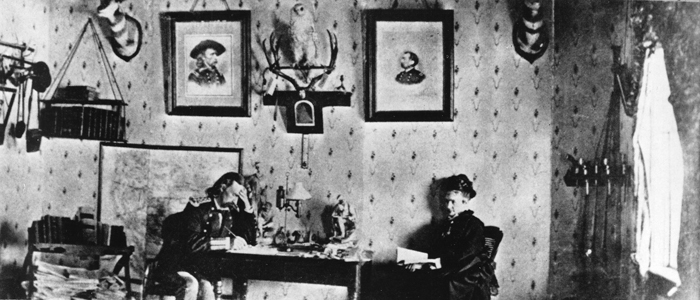
Overall, the soldiers were pleased with their weapons. Lieutenant James Calhoun of Company L wrote in his diary on July 1, 1874: 'The new Springfield arms and ammunition were issued to the command today. They seem to give great satisfaction.' Although most of the men drew the standard-issue weapons, it was their prerogative to purchase their own arms. George Custer carried a Remington .50-caliber sporting rifle with octagonal barrel and two revolvers that were not standard issue–possibly Webley British Bulldog, double-action, white-handled revolvers. Captain Thomas A. French of Company M carried a .50-caliber Springfield that his men called 'Long Tom.' Sergeant John Ryan, also of Company M, used a .45-caliber, 15-pound Sharps telescopic rifle, specially made for him. Private Henry A. Bailey of Company I had a preference for a Dexter
Smith, breechloading, single-barreled shotgun.
Dexter
Smith, breechloading, single-barreled shotgun.
It is well-known that Custer's men each brought a trapdoor Springfield and a
Colt .45 to the Little Bighorn that June day in 1876. Identification of
the Indian weapons is more uncertain. Participants claimed to have gone
into battle with a plethora of arms–bows and arrows, ancient
muzzleloaders, breechloaders and the latest repeating arms. Bows and
arrows played a part in the fight. Some warriors said they lofted
high-trajectory arrows to fall among the troopers while remaining hidden
behind hill and vale. The dead soldiers found pincushioned with arrows,
however, were undoubtedly riddled at close range after they were
already dead or badly wounded. The long range at which most of the
fighting occurred did not allow the bow and arrow a prominent role.
and a
Colt .45 to the Little Bighorn that June day in 1876. Identification of
the Indian weapons is more uncertain. Participants claimed to have gone
into battle with a plethora of arms–bows and arrows, ancient
muzzleloaders, breechloaders and the latest repeating arms. Bows and
arrows played a part in the fight. Some warriors said they lofted
high-trajectory arrows to fall among the troopers while remaining hidden
behind hill and vale. The dead soldiers found pincushioned with arrows,
however, were undoubtedly riddled at close range after they were
already dead or badly wounded. The long range at which most of the
fighting occurred did not allow the bow and arrow a prominent role.
Not until archaeological investigations were conducted on the battlefield during the 1980s did the extent to which the Indians used gunpowder weapons come to light. Modern firearm identification analysis revealed that the Indians had spoken the truth about the variety and number of weapons they carried. The Cheyenne warrior Wooden Leg went into battle with what he called a'six-shooter' and later captured a Springfield carbine and 40 rounds of ammunition. The Miniconjou One Bull, Sitting Bull's nephew, owned an old muzzleloader. The Hunkpapa Iron Hawk and the Cheyenne Big Beaver had only bows and arrows. Eagle Elk, an Oglala, started the battle with a Winchester. White Cow Bull, an Oglala, also claimed to have a repeater.
There were 2,361 cartridges, cases and bullets recovered from the entire battlefield, which reportedly came from 45 different firearms types (including the Army Springfields and Colts, of course) and represented at least 371 individual guns. The evidence indicated that the Indians used Sharps, Smith & Wessons, Evans, Henrys, Winchesters, Remingtons, Ballards, Maynards, Starrs, Spencers, Enfields and Forehand & Wadworths, as well as Colts and Springfields of other calibers. There was evidence of 69 individual Army Springfields on Custer's Field (the square-mile section where Custer's five companies died), but there was also evidence of 62 Indian .44-caliber Henry repeaters and 27 Sharps .50-caliber weapons. In all, on Custer's Field there was evidence of at least 134 Indian firearms versus 81 for the soldiers. It appears that the Army was outgunned as well as outnumbered.
Survivors of the remaining seven companies of the 7th Cavalry asserted that the Indians were equipped with repeating rifles and mentioned Winchesters as often as not. Major Marcus Reno claimed: 'The Indians had Winchester rifles and the column made a large target for them and they were pumping bullets into it.' Although some white survivors claimed to be heavily outgunned, Private Charles Windolph of Company H was probably closest to the truth when he estimated that half the warriors carried bows and arrows, one-quarter of them carried a variety of old muzzleloaders and single-shot rifles, and one-quarter carried modern repeaters.
The Winchester, in fact, was almost a duplicate of the repeater developed by B. Tyler Henry, who was to become superintendent at Oliver Winchester's New Haven Arms Company. The success of Henry's rifles ensured Winchester's success, and the primary weapon carried by the Indians at the Little Bighorn was either Henry's model or the slightly altered Winchester Model 1866. Both fired a .44-caliber Henry rimfire cartridge. The Henry used a 216-grain bullet with 25 grains of powder, while the Winchester used a 200-grain bullet with 28 grains of powder. Velocity was 1,125 feet per second, with 570 foot-pounds of energy. Cartridges were inserted directly into the front of the Henry magazine, while the Winchester 1866 had a spring cover on the right side of the receiver. The carbine and the rifle had a capacity of 13 and 17 cartridges respectively.
Even though the board selected the Springfield as the top single-shot weapon, the Indians' arms fared nearly as well in subsequent tests. The Springfields recorded 100 percent accuracy at 100 yards, but so did the Winchesters, Henrys, Sharps, Spencers and various muzzleloaders. At 300 yards, the Springfield .45-55 carbine's accuracy dropped to 75 percent, while the repeaters fell to about 40 percent. Weapons such as the Springfield .50-70 rifle and the Sharps .45-70 rifle, however, still produced 100 percent accuracy at 300 yards. At 600 yards, both Springfields could still hit the mark 32 percent of the time, while the Winchesters and Henrys were almost useless at ranges over 300 yards.
In effect, all of these weapons fared equally well at short ranges. The Army's Springfields had an accuracy advantage over the Indians' repeaters at medium ranges (200500 yards), plus they were more rugged and durable. The long-range weapons the Indians had were too few (there is evidence of only one Sharps .45-70 at the battle) to make much of a difference. Their preponderance of repeaters increased the Indians' firepower, but the repeaters were only good at short ranges. And the Indian narratives tell a story of a battle that, until the last desperate moments, was fought generally from long range (more than 500 yards)–a dubious advantage to the cavalrymen, since the relatively slow muzzle velocity of their Springfields meant a high trajectory that made chances of hitting anything slim.
Overall, the pluses and minuses probably canceled each other out. It has been said that the 7th Cavalry might have won had it still used the seven-shot Spencers it carried at the Washita battle in 1868, but the Spencers were no better in range or accuracy than the Henrys or Winchesters, and they carried fewer bullets. The contention that the Springfields suffered from a significant number of extractor failures was not borne out. Only about 2 percent of the recovered specimens showed evidence of extractor problems. Custer has been criticized for not taking along a battery of Gatling guns, but General Nelson A. Miles commented on their usefulness: 'I am not surprised that poor Custer declined' taking them along, he said. 'They are worthless for Indian fighting.' Equipping the cavalry with another type of weapon probably would not have made much of a difference at the Little Bighorn.
What, then, was the reason that the soldiers made such a poor showing during the West's most famous Army-Indian battle? While Custer's immediate command of 210 men was wiped out and more than 250 troopers and scouts were killed in the fighting on June 25-26, the Indians lost only about 40 or 50 men. The explanation appears to lie in the fact that weapons are no better than the men who use them. Marksmanship training in the frontier Army prior to the 1880s was almost nil. An Army officer recalled the 1870s with nostalgia. 'Those were the good old days,' he said. 'Target practice was practically unknown.' A penurious government allowed only about 20 rounds per year for training–a situation altered only because of the Custer disaster. And the 20 rounds of ammunition often were expended in firing at passing game rather than in sharpshooting. The 7th Cavalry was not hampered by new recruits, for only about 12 percent of the force could be considered raw. What handicapped the entire regiment, however, was inadequate training in marksmanship and fire discipline.
It is a perplexing incongruity in a citizen-soldier army, but the vast majority of soldiers, when the time comes to kill, become conscientious objectors. It has been asserted that man is essentially a killer at heart, yet recent studies have found evidence quite to the contrary. Men, soldiers or not, simply have an innate resistance to killing. It is fairly well-established that when faced with danger, a man will usually respond by fight or flight. New studies, however, have argued that there are two other likely possibilities: posture or submit.
It is the posturing that has increased with the introduction of firearms to the battlefield. It is almost impossible for a man to shirk battle when at arm's length from an enemy wielding sword or pike, but it is easier to remain aloof at rifle range. One has other options besides immediate fight or flight. The Rebel yell or the Union 'hurrah,' for example, were simply means to bolster one's courage while trying to frighten the enemy. The loud crack of the rifle also served the same purpose, filling a deep-seated need to posture–i.e., to put on a good show and scare the enemy, yet still leave the shooter far away from a hand-to-hand death struggle. In reality, those good shows were often harmless, with the rifleman firing over the heads of the enemy.
Firing high has always been a problem, and it apparently does not stem solely from inadequate training. Soldiers and military historians from Ardant du Picq to Paddy Griffith and John Keegan have commented on the phenomenon. In Civil War battles, 200 to 1,000 men might stand, blasting away at the opposing lines at 30 to 50 yards distance, and only hit one or two men per minute. Commanders constantly admonished their troops to aim low and give the enemy a blizzard at his shins. Regardless, the men continued to fire high–sometimes intentionally, sometimes without consciously knowing what they were doing.
In Vietnam, it was estimated that some firefights had 50,000 bullets fired for each soldier killed. In the Battle of the Rosebud, eight days before the Little Bighorn fight, General George Crook's forces fired about 25,000 rounds and may have caused about 100 Indian casualties–about one hit for every 250 shots. One of the best showings ever made by soldiers was at Rorke's Drift in an 1879 battle between the Zulus and the British infantry. There, surrounded, barricaded soldiers delivered volley after volley into dense masses of charging natives at point-blank range where it seemed that no shot could miss. The result: one hit for every 13 shots.
Indeed, it was at times even difficult to get soldiers to fire at all. After the Battle of Gettysburg, 24,000 loaded muskets were recovered; only 12,000 of them had been loaded more than once, 6,000 had from three to 10 rounds in the barrel, and one weapon had been loaded 23 times! One conclusion is that a great number of soldiers are simply posturing and not trying to kill the enemy.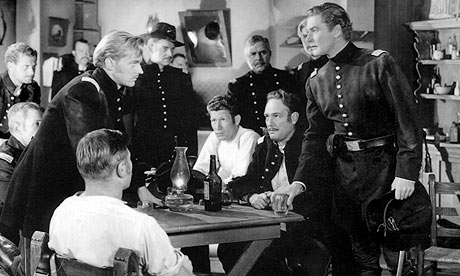
At the Little Bighorn, about 42,000 rounds were either expended or lost. At that rate, the soldiers hit one Indian for about every 840 shots. Since much of the ammunition was probably lost–Indians commented on capturing ammunition in cartridge belts and saddlebags–the hit rate must have been higher. Yet the results do not speak highly of a supposedly highly trained, 'crack' cavalry regiment.
High fire very plainly took place at the Little Bighorn, most notably on Reno's skirmish line in the valley. Troopers went into battle with 100 rounds of Springfield ammunition and 24 rounds of Colt ammunition. About 100 troopers on Reno's line may have fired half of their ammunition toward the southern edge of the Indian village. The 5,000 bullets only hit one or two Indians, but they certainly damaged the lodges. A Hunkpapa woman, Moving Robe, claimed 'the bullets shattered the tepee poles,' and another Hunkpapa woman, Pretty White Buffalo, stated that 'through the tepee poles their bullets rattled.' The relatively low muzzle velocity of the Springfield meant that the soldier would have had to aim quite a bit over the head of an Indian for any chance to hit him at long distance. If the officers called for the sights to be set for 500 yards to hit Indians issuing from the village–and did not call for a subsequent sight adjustment–by the time the Indians approached to 300 yards, the bullets would be flying 12 feet over their heads. As a comparison, the modern M-16 round, traveling at 3,250 feet per second, has an almost flat trajectory, and the bullet will hit where it is aimed with very little sight adjustment.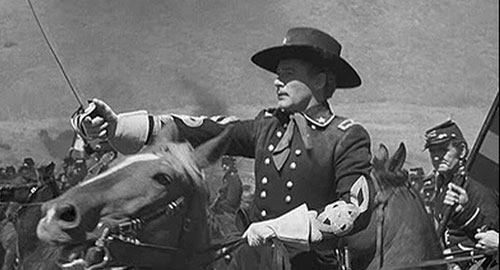
The soldiers' difficulty in hitting their targets was also increased by the fact that the Indians stayed out of harm's way for almost all of the battle. One archaeological field study located the Indian positions and discovered that nearly every location was 300 to 1,200 yards away from the troopers. Given the distances involved, the fact that soldiers tended to shoot high, the lack of marksmanship training and the conscious or subconscious posturing involved, it is not surprising that the troopers scored so few hits.
Arguably, posturing has been a factor at every gunpowder battle, as it most likely was at the Little Bighorn–but how about submission? It was drummed into the common soldier that he should save the last bullet for himself. He supposedly would place his Colt to his head, pull the trigger and go to Fiddler's Green, rather than take the chance of being captured alive. Custer had even requested that his wife, Elizabeth, who often rode with the cavalry, should be shot by an officer rather than chance being taken by the Indians. As strange as it may seem, even with this dread of being captured, surrender attempts were made at the Little Bighorn fight. Indian accounts tell of white men who, at the last second, threw their hands up in surrender and offered their guns to the onrushing warriors. The Lakotas and Cheyennes were not swayed.
Given all these factors operating against the citizen-soldier, how could commanders ever go into battle expecting to win? The answer, again, lies not in the weapons the soldiers used, but in the soldiers themselves–and their officers.
Dividing up a command in the near presence of an enemy may be an act to be avoided during large-scale maneuvers with army-sized units, but such is not the case during small-scale tactical cavalry maneuvers. Custer adhered to the principles for a successful engagement with a small, guerrilla-type, mobile enemy. Proven tactics called for individual initiative, mobility, maintaining the offensive, acting without delay, playing not for safety but to win, and fighting whenever the opportunity arose. It was accepted that Regular soldiers would never shirk an encounter even with a superior irregular force of enemies, and that division of force for an enveloping attack combined with a frontal assault was a preferable tactic. On a small scale, and up to a certain point, Custer did almost everything he needed to do to succeed.
Problems arose, however, when tactics broke down from midlevel and small-scale, to micro-scale. According to then Brevet Major Edward S. Godfrey, fire discipline–the ability to control and direct deliberate, accurate, aimed fire–will decide every battle. No attack force, however strong, could reach a defensive line of steady soldiers putting out disciplined fire. The British army knew such was the case, as did Napoleon. Two irregular warriors could probably defeat three soldiers. However, 1,000 soldiers could probably beat 2,000 irregulars. The deciding factor was strength in unity–fire discipline. It was as Major Godfrey said: 'Fire is everything, the rest is nothing.'
Theoretically, on the Little Bighorn, with a small-scale defense in suitable terrain with an open field of fire of a few hundred yards, several companies of cavalrymen in close proximity and under strict fire control could have easily held off two or three times their number of Indian warriors. In reality, on the Little Bighorn, several companies of cavalrymen who were not in close proximity and had little fire control, with a micro-scale defense in unsuitable, broken terrain, could not hold off two or three times their number of Indian warriors.
The breakdown stems from an attitude factor. Custer exhibited an arrogance, not necessarily of a personal nature, but rather as a part of his racial makeup. Racial experience may have influenced his reactions to the immediate situation of war. It was endemic in red vs. white modes of warfare and implies nothing derogatory to either side. Historically, Indians fled from large bodies of soldiers. It was Custer's experience that it was much harder to find and catch an Indian than to actually fight him. Naturally influenced by his successful past experiences with small-unit tactics, Custer attacked. He was on the offensive. He knew he must remain on the offensive to be successful. Even after Reno had been repulsed, Custer was maneuvering, looking for another opportunity to attack.
The positions that Custer's dead were found in did not indicate a strong defensive setup. Even after the Indians had taken away the initiative, Custer's mind-set was still on 'attack.' Although a rough, boxlike perimeter was formed, it appeared more a matter of circumstance than intent. Custer probably never realized that
his men's very survival was on the line, at least not
Custer probably never realized that
his men's very survival was on the line, at least not until it was too
late to remedy the situation. The men were not in good defensible
terrain.
until it was too
late to remedy the situation. The men were not in good defensible
terrain. They were not within mutual supporting distance. They were not
under the tight fire control of their officers.
They were not within mutual supporting distance. They were not
under the tight fire control of their officers.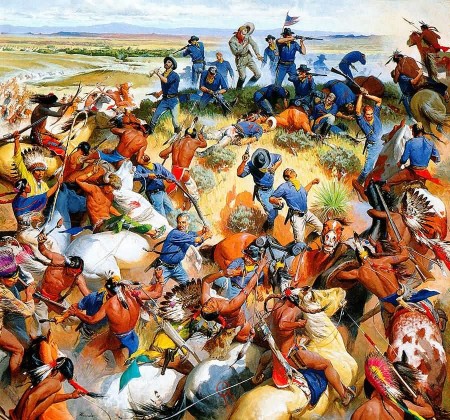 Custer's troopers were
in detachments too small for a successful tactical stance. When the
critical point was reached, the soldiers found themselves stretched
beyond the physical and psychological limits of fight or posture–they
had to flee or submit.
Custer's troopers were
in detachments too small for a successful tactical stance. When the
critical point was reached, the soldiers found themselves stretched
beyond the physical and psychological limits of fight or posture–they
had to flee or submit.
Seemingly out of supporting distance of his comrades, the individual trooper found himself desperately alone. The 'bunkie' was not close enough. The first sergeant was far away. The lieutenant was nowhere to be seen. The trooper responded as well as he could have been expected to. He held his ground and fought, he fired into the air like an automaton, he ran, he gave up. Some stands were made, particularly on and within a radius of a few hundred yards of the knoll that became known as Custer Hill, where almost all of the Indian casualties occurred. When it came down to one-on-one, warrior versus soldier, however, the warrior was the better fighter.
George Armstrong Custer may have done almost everything as prescribed. But it was not enough to overcome the combination of particular circumstances, some of his own making, arrayed against him that day. Inadequate training in marksmanship and poor fire discipline resulting from a breakdown in command control were major factors in the battle results. Neither Custer's weapons nor those the Indians used against him were the cause of his defeat.
The event was romanticised as "Custer's Last Stand", but military analysts and historians soon cast doubt on this supposed hero's feats.
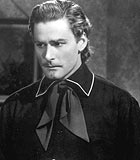
THE FLYNN FILM
Custer, war hero and dandy
All the other cadets are dressed like normal 1857 folk, but Custer (Errol Flynn) turns up at West Point military academy dressed in a fur-trimmed jacket, a plumed hat, pirate-style knee boots, and some alarmingly tight trousers, accessorised with a regimental sword and a pack of hounds. He looks ready for the battlefield, if the battlefield were in France about 200 years earlier and fictional. "My, that's a dashing looking outfit," observes a fellow soldier, sarcastically. Custer misses the joke, and murmurs thoughtfully: "I must get myself a tiger skin as soon as possible." Flamboyant though he was, the film's implication that Custer arrived at West Point a privileged rich boy is completely wrong. He grew up in an ordinary working-class household and attended the academy on a scholarship.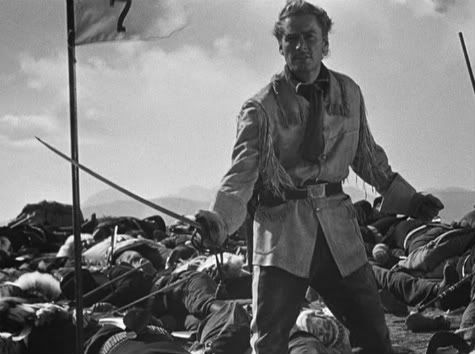
The film's retelling of Custer's early adventures in the civil war is riddled with so many errors that there isn't enough space here to list them all. Dates are wrong, details of battles are fudged, events appear in the wrong order, Custer's career path is imaginatively fictionalised, and Winfield Scott has his term as commander-general extended by about
five years so that Sydney Greenstreet gets a better role. After the war,
Custer sinks into depression, acquiring a mullet and a drinking
problem, both of which are refreshingly factual. Eventually, he is
posted to the Dakota frontier. It turns out to be a land of
ne'er-do-wells, hostile tribes and egregious historical inaccuracy.
and Winfield Scott has his term as commander-general extended by about
five years so that Sydney Greenstreet gets a better role. After the war,
Custer sinks into depression, acquiring a mullet and a drinking
problem, both of which are refreshingly factual. Eventually, he is
posted to the Dakota frontier. It turns out to be a land of
ne'er-do-wells, hostile tribes and egregious historical inaccuracy.
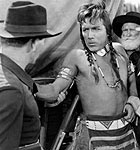 Not smoking the peace pipe ...
Not smoking the peace pipe ...
Custer is shown trying to make peace with the Lakota Sioux nation. He is thwarted by an evil businessman, Ned Sharp, who announces that there is gold in the Black Hills and provokes a war. Sharp is fictional: the person who really announced that he had found gold in the Black Hills, causing a rush which violated the Treaty of Fort Laramie and started the Great Sioux war, was George Armstrong Custer
.
An odd mixture of dubious movie Injun-speak and political correctness. Anthony Quinn, playing Crazy Horse, comes out with lines such as, "Crazy Horse war chief Sioux. My people want make peace." At the same time, Custer is cast, improbably, as a passionate defender of Native American rights. He tries to send an English soldier away from the last stand, saying that this is an American fight (again, improbably:
 THE 7TH.
THE 7TH.
the 7th Cavalry contained a substantial proportion of Europeans). "The only real Americans in this merry old parish are on the other side of the hill with feathers in their hair," remarks the Englishman. "You're probably right about that," Custer replies, thoughtfully. Custer as a Lakota hero? This is a moment comparable to the awarding of the Nobel peace prize to Henry Kissinger, when Tom Lehrer commented that political satire would henceforth be obsolete.
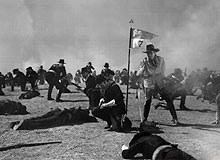 Action-packed ...
Action-packed ...
Immigrants , under aged, bad health, little oral hygiene , bad teeth, beyond their endurance, hardly any Americans

bad bones, aged beyond their years as they rode into the battle of the valley of death.

Custer and the 7th cavalry were demolished by Dakota fighting tactics
 General Crook was also defeated at the Battle of Rosebud
General Crook was also defeated at the Battle of Rosebud days prior to
the Little Bighorn.
days prior to
the Little Bighorn.  The U.S Cavalry fought in skirmish lines just as
they did during the Civil War. Who in their right mind fights like
that?…
The U.S Cavalry fought in skirmish lines just as
they did during the Civil War. Who in their right mind fights like
that?… The Dakota were masters at prairie battle tactics and used
camoflage.
The Dakota were masters at prairie battle tactics and used
camoflage.  Read the officers accounts of the Battle of the Rosebud.
Read the officers accounts of the Battle of the Rosebud. The U.S officers had no idea how fight against the Dakotas.
The U.S officers had no idea how fight against the Dakotas.They relied on Crow scouts to reveal tactics and positions.

Your average image of the Dakota warrior is based on hollywood movies.
 The U.S never defeated the Dakota in battle.The plains indian fought up close and kept his friends close but his enemy even
The U.S never defeated the Dakota in battle.The plains indian fought up close and kept his friends close but his enemy even closer. Lakota and Cheyenne warriors were generally quick killers and didn't go
in for a lot
closer. Lakota and Cheyenne warriors were generally quick killers and didn't go
in for a lot of torture, though they certainly mutilated the dead
afterwards. When Fanny Kelly
of torture, though they certainly mutilated the dead
afterwards. When Fanny Kelly was captured by the Lakota in 1864, they
dragged her off into a teepee — and made them teach her how to read. She
appears never to have been raped and when she owned a house in
Washington she invited any Lakota who showed up with his wife to stay
over. Perhaps the greatest myth of the American West is that Indians
were "savages"
was captured by the Lakota in 1864, they
dragged her off into a teepee — and made them teach her how to read. She
appears never to have been raped and when she owned a house in
Washington she invited any Lakota who showed up with his wife to stay
over. Perhaps the greatest myth of the American West is that Indians
were "savages" . Their most frequent initial response to white people was curiosity, sometimes followed by hospitality. Even when wars were in progress, Catholic priests and Quakers could circulate among the Plains tribes without fear because they were holy men who presented no threat. Once Episcopal Bishop Henry Whipple, visiting Lakota friends, got up on a cold night to bring his saddle into the teepee to prevent theft. "You didn't have to do that," his Lakota host told him. "You're the only white man around for 50 miles…."

Jamming? Perhaps. Richard Fox 'dig' in the 80's indicated near normal 'jammed case' of those recovered.
If a .50 was the standard issue in 1874, then the G-4 of the Dept of Dakota order many hundred of thousand/rounds of the wrong .45-55 cartridges. Infantry would have also been given the incorrect 45-70 for their '.50 rifle if so issued.
Uncle Sam chapter of the James Donovan/A Terrible Glory. G-4 wins wars, G3 submitted to S3
 tenacity wins battles. Virtually every level
of command committed mighty errors of decision, from the President down.
tenacity wins battles. Virtually every level
of command committed mighty errors of decision, from the President down.There a white man among the Sioux and Cheyenne at the Battle of the Little BighornThis is a question that first arose during the battle because Americans like Peter Thompson, John Ryan, William O. Taylor and an anonymous wounded survivor heard bugle calls coming from the Indian side. Kill Eagle and John Stands In Timber said the buglers were Indians, and they probably were, but the question of whether a white man was among the Indians on June 25, 1876 remains.
Asked directly in September 1876 if there was a white among the Indians that day, Blackfeet Sioux war chief Kill Eagle replied
 , "There were no white men in the fight or on the field. One who had been with them went to Standing Rock Agency." Quized again one month later if their was a "Spaniard" with the Indians, Kill Eagle said, "There was once a white man in camp, but he went to Spotted Tail's [Agency] before the fight."
, "There were no white men in the fight or on the field. One who had been with them went to Standing Rock Agency." Quized again one month later if their was a "Spaniard" with the Indians, Kill Eagle said, "There was once a white man in camp, but he went to Spotted Tail's [Agency] before the fight."Oglala Sioux war chief He Dog said he "did not see any white man among Sioux." But then He Dog added significantly, "In my camp there was a Canadian half breed who spoke very good English as well as Sioux." From He Dog's testimony, it appears that this individual was present on June 25, 1876.Unreconstituted Confederate mercinary Frank Huston said, "I was a squaw man, yes; but I was not present at the Little Big Horn. I was 50 miles away headed thereto. But O -- how I would have liked to have been there! Yet as a matter of fact, there were white men there; not with the Sioux, but with other nations present. Put yourself in their place. Would you, then or now, acknowledge it?" Huston provided no details to support his assertion.
The main eye-witness evidence that there may have been one or more white man fighting on the Indian side at the Battle of the Little Bighorn comes from the accounts of survivors Peter Thompson and August De Voto, and an Anonymous Sixth Infantry Sergeant who was an eye-witness to the condition of the battlefield immediately afterwards.
Thompson provides the strongest testimony. He said he and fellow Seventh Cavalry straggler James Watson were fleeing some Sioux on the banks of the Little Bighorn when they encountered a white man and an Indian whom they at first took for friends -- until the pair dismounted, "threw their guns across their saddles" and fired at them, sending Thompson and Watson fleeing.
After the battle, August De Voto said, "we went over the ground where the Indian camp had been. There were two tepees left standing full of dead Indians. As we rode past I looked in. They were piled up like cordwood. One of them looked to me very much like a white man. I could not see his face, but his legs looked white. I had no chance to go in and make a close investigation."
Other Seventh cavalry survivors made similar statements. In a 1904 interview with Walter Mason Camp, John Martin said he saw the corpse of a white man in the village after the battle, and Camp's comments indicate Daniel Kanipe also told Camp that he saw a dead white man in the village after the battle.
An Anonymous Sixth Infantry Sergeant added, "One of the Indians that was shot by [Major Marcus] Reno's men attracted peculiar attention, and upon going up to him he was found masked, and upon removing the mask the features of a white man were disclosed, with a long, gray, patriarchial beard."
So who knows? Maybe there was one or more white men fighting on the Sioux and Cheyenne side, but the next question is, "did it matter?" and the answer is, "no, it didn't matter." As Short Bull observed of Crazy Horse as he turned from Reno to flank Custer's decapitated command, the Sioux and Cheyenne had their "business well in hand" that day. The last Seventh Cavalry survivor to leave Custer's command was Peter Thompson (also the last man to see Custer alive). Thompson 's exhausted horse "entirely played out" part way down Medicine Tail Coulee, and he was left behind when his comrades charged on to attack the huge Indian village on the other side of the Little Bighorn with Custer in the lead.
There is no evidence that any American got away and lived after this, although Seventh Cavalry survivor Edward Godfrey raised the possiblility in his 1892 Century article when he spoke of the carcass of an apparent Seventh Cavalry horse that had been shot in the head that the Americans found near the mouth of the Rosebud a few weeks after the battle.
"At the time of the discovery we conjectured that some man had escaped, and on reaching the river had killed his horse for meat and used the saddle straps to tie together a raft," wrote Godfrey.
In truth, many seem to have tried, but no one made it, as noted by Two Moon, Wooden Leg, He Dog, Foolish Elk, Flying Hawk and others.
There was also an American trooper who took his clothes off and dove in the river to hide there. The Sioux watched him breathing through his nose for a long time and then shot him dead. Another American played possom among the dead on the battlefield until after the battle when a squaw stripped him and started to hack up his supposed corpse, at which point he jumped up and ran around naked until he was killed.
Based on the eye-witness record, it is impossible to say that any of Custer's men got away and lived, but there is evidence that one or more may have gotten away, and perished from their wounds before they could reach safety.
Three or four weeks after the Battle of the Little Bighorn, some of General George Crook's troops found the remains of an American cavalry trooper "a few days journey from Custer's hill" who was identified by some as Nathan Short, a trooper with Custer on June 25, 1876.
Daniel Kanipe, who carried Custer's last order to McDougall, said, "How I came to know it was Short of my company was that he had his stuff numbered 50, and General Crook reported that the man's number was 50. He was with the company [Custer's command] when I left it, on Reno's hill."
However, there is some disagreement on how Short marked his gear (with the number 50 or the number 7), and the condition of the remains suggested they had been there longer than a month.
Sioux warrior Lights also spoke of a wounded American soldier whose corpse was found some distance from the battlefield several days after the battle. He had apparently been subsisting on frogs. The Sioux deduced this from the fact that the dead man's pockets were filled with frogs.
The original Springfield Rifle adopted by the army was not .45 caliber. It was a .50. Also the ammunition issued for the .45 jammed notoriously and was a factor in the battle. you might want to check these facts out to your satisfaction and posting improvementt may be that the Battle of the Little Bighorn is the most written about subject in American history. For more than 120 years, people have speculated about how Lieutenant Colonel George A. Custer and five companies of the 7th Cavalry were overwhelmed in southeastern Montana Territory by a combined force of Lakota and Cheyenne Indians on June 25, 1876. Yet, the controversy does not appear any closer to resolution today.
A number of reasons have been given for the defeat: Custer disobeyed orders, disregarded the warnings of his scouts, violated the principles of warfare by dividing his command, was ambushed or was the victim of a conspiracy; internal regimental jealousies caused the defeat; the regiment was too tired to fight; there were too many raw recruits or too many Indians; the Indians had better weapons; or the Army had defective guns. Most of the conjectures are moot, for they can be debated endlessly–with intellectual and emotional biases interfering with reasoned arguments. Given the nature of the evidence, however, one should be able to study the role the weapons played in the battle's outcome with a modicum of objectivity.
During the battle, the 7th Cavalry troopers were armed with the Springfield carbine Model 1873 and the Colt Single Action Army revolver Model 1873. Selection of the weapons was the result of much trial and error, plus official testing during 187173. The Ordnance Department staged field trials of 89 rifles and carbines, which included entries from Peabody, Spencer, Freeman, Elliot and Mauser. There were four primary contenders: the Ward-Burton bolt-action rifle; the Remington rolling-block; the 'trapdoor' Springfield; and the Sharps, with its vertically sliding breechblock.
Although repeating rifles such as the Spencer, Winchester and Henry had been available, particularly in the post-Civil War years, the Ordnance Department decided to use a single-shot system. It was selected instead of a repeating system because of manufacturing economy, ruggedness, reliability, efficient use of ammunition and similarity to European weapons systems. Ironically, the board of officers involved in the final selection included Major Marcus A. Reno, who would survive the 7th Cavalry's 1876 debacle on the Little Bighorn.
The guns were all tested for defective cartridges, endurance, accuracy, rapidity of fire, firing with excessive charges, and effects of dust and rust. The Springfield was the winner. The Model 1873 carried by the 7th Cavalry was a carbine that weighed 7 pounds and had an overall length of 41 inches. It used a .45-caliber copper-cased cartridge, a 405-grain bullet and a charge of 55 grains of black powder. The best effective range for this carbine was under 300 yards, but significant hits still could be scored out to 600 yards. A bullet was driven out of the muzzle at a velocity of about 1,200 feet per second, with 1,650 foot-pounds of energy. The trapdoor Springfield could hurl a slug more than 1,000 yards and, with proper training, could be fired with accuracy 12 to 15 times per minute.
The Colt Single Action Army revolver was chosen over other Colts, Remingtons and Starrs. By 1871, the percussion cap models were being converted for use with metallic cartridges. Ordnance testing in 1874 narrowed the field to two final contenders: the Colt Single Action Army and the Smith & Wesson Schofield. The Schofield won only in speed of ejecting empty cartridges. The Colt won in firing, sanding and rust trials and had fewer, simpler and stronger parts. The Model 'P' had a barrel of 7.5 inches and fired six .45-caliber metallic cartridges with 28 grains of black powder. It had a muzzle velocity of 810 feet per second, with 400 foot-pounds of energy. Its effective range dropped off rapidly over 60 yards, however. The standard U.S. issue of the period had a blue finish, case-hardened hammer and frame, and walnut grips. The Colt became ubiquitous on the frontier. To the soldier it was a 'thumb-buster,' to the lawman a 'peacemaker' or 'equalizer,' and to the civilian a 'hog leg' or 'plow-handle.' The revolver was so strong and dependable that, with minor modifications, it was still being produced by the Colt Company into the 1980s.

Overall, the soldiers were pleased with their weapons. Lieutenant James Calhoun of Company L wrote in his diary on July 1, 1874: 'The new Springfield arms and ammunition were issued to the command today. They seem to give great satisfaction.' Although most of the men drew the standard-issue weapons, it was their prerogative to purchase their own arms. George Custer carried a Remington .50-caliber sporting rifle with octagonal barrel and two revolvers that were not standard issue–possibly Webley British Bulldog, double-action, white-handled revolvers. Captain Thomas A. French of Company M carried a .50-caliber Springfield that his men called 'Long Tom.' Sergeant John Ryan, also of Company M, used a .45-caliber, 15-pound Sharps telescopic rifle, specially made for him. Private Henry A. Bailey of Company I had a preference for a
 Dexter
Smith, breechloading, single-barreled shotgun.
Dexter
Smith, breechloading, single-barreled shotgun.It is well-known that Custer's men each brought a trapdoor Springfield
 and a
Colt .45 to the Little Bighorn that June day in 1876. Identification of
the Indian weapons is more uncertain. Participants claimed to have gone
into battle with a plethora of arms–bows and arrows, ancient
muzzleloaders, breechloaders and the latest repeating arms. Bows and
arrows played a part in the fight. Some warriors said they lofted
high-trajectory arrows to fall among the troopers while remaining hidden
behind hill and vale. The dead soldiers found pincushioned with arrows,
however, were undoubtedly riddled at close range after they were
already dead or badly wounded. The long range at which most of the
fighting occurred did not allow the bow and arrow a prominent role.
and a
Colt .45 to the Little Bighorn that June day in 1876. Identification of
the Indian weapons is more uncertain. Participants claimed to have gone
into battle with a plethora of arms–bows and arrows, ancient
muzzleloaders, breechloaders and the latest repeating arms. Bows and
arrows played a part in the fight. Some warriors said they lofted
high-trajectory arrows to fall among the troopers while remaining hidden
behind hill and vale. The dead soldiers found pincushioned with arrows,
however, were undoubtedly riddled at close range after they were
already dead or badly wounded. The long range at which most of the
fighting occurred did not allow the bow and arrow a prominent role.Not until archaeological investigations were conducted on the battlefield during the 1980s did the extent to which the Indians used gunpowder weapons come to light. Modern firearm identification analysis revealed that the Indians had spoken the truth about the variety and number of weapons they carried. The Cheyenne warrior Wooden Leg went into battle with what he called a'six-shooter' and later captured a Springfield carbine and 40 rounds of ammunition. The Miniconjou One Bull, Sitting Bull's nephew, owned an old muzzleloader. The Hunkpapa Iron Hawk and the Cheyenne Big Beaver had only bows and arrows. Eagle Elk, an Oglala, started the battle with a Winchester. White Cow Bull, an Oglala, also claimed to have a repeater.
There were 2,361 cartridges, cases and bullets recovered from the entire battlefield, which reportedly came from 45 different firearms types (including the Army Springfields and Colts, of course) and represented at least 371 individual guns. The evidence indicated that the Indians used Sharps, Smith & Wessons, Evans, Henrys, Winchesters, Remingtons, Ballards, Maynards, Starrs, Spencers, Enfields and Forehand & Wadworths, as well as Colts and Springfields of other calibers. There was evidence of 69 individual Army Springfields on Custer's Field (the square-mile section where Custer's five companies died), but there was also evidence of 62 Indian .44-caliber Henry repeaters and 27 Sharps .50-caliber weapons. In all, on Custer's Field there was evidence of at least 134 Indian firearms versus 81 for the soldiers. It appears that the Army was outgunned as well as outnumbered.
Survivors of the remaining seven companies of the 7th Cavalry asserted that the Indians were equipped with repeating rifles and mentioned Winchesters as often as not. Major Marcus Reno claimed: 'The Indians had Winchester rifles and the column made a large target for them and they were pumping bullets into it.' Although some white survivors claimed to be heavily outgunned, Private Charles Windolph of Company H was probably closest to the truth when he estimated that half the warriors carried bows and arrows, one-quarter of them carried a variety of old muzzleloaders and single-shot rifles, and one-quarter carried modern repeaters.
The Winchester, in fact, was almost a duplicate of the repeater developed by B. Tyler Henry, who was to become superintendent at Oliver Winchester's New Haven Arms Company. The success of Henry's rifles ensured Winchester's success, and the primary weapon carried by the Indians at the Little Bighorn was either Henry's model or the slightly altered Winchester Model 1866. Both fired a .44-caliber Henry rimfire cartridge. The Henry used a 216-grain bullet with 25 grains of powder, while the Winchester used a 200-grain bullet with 28 grains of powder. Velocity was 1,125 feet per second, with 570 foot-pounds of energy. Cartridges were inserted directly into the front of the Henry magazine, while the Winchester 1866 had a spring cover on the right side of the receiver. The carbine and the rifle had a capacity of 13 and 17 cartridges respectively.
Even though the board selected the Springfield as the top single-shot weapon, the Indians' arms fared nearly as well in subsequent tests. The Springfields recorded 100 percent accuracy at 100 yards, but so did the Winchesters, Henrys, Sharps, Spencers and various muzzleloaders. At 300 yards, the Springfield .45-55 carbine's accuracy dropped to 75 percent, while the repeaters fell to about 40 percent. Weapons such as the Springfield .50-70 rifle and the Sharps .45-70 rifle, however, still produced 100 percent accuracy at 300 yards. At 600 yards, both Springfields could still hit the mark 32 percent of the time, while the Winchesters and Henrys were almost useless at ranges over 300 yards.
In effect, all of these weapons fared equally well at short ranges. The Army's Springfields had an accuracy advantage over the Indians' repeaters at medium ranges (200500 yards), plus they were more rugged and durable. The long-range weapons the Indians had were too few (there is evidence of only one Sharps .45-70 at the battle) to make much of a difference. Their preponderance of repeaters increased the Indians' firepower, but the repeaters were only good at short ranges. And the Indian narratives tell a story of a battle that, until the last desperate moments, was fought generally from long range (more than 500 yards)–a dubious advantage to the cavalrymen, since the relatively slow muzzle velocity of their Springfields meant a high trajectory that made chances of hitting anything slim.
Overall, the pluses and minuses probably canceled each other out. It has been said that the 7th Cavalry might have won had it still used the seven-shot Spencers it carried at the Washita battle in 1868, but the Spencers were no better in range or accuracy than the Henrys or Winchesters, and they carried fewer bullets. The contention that the Springfields suffered from a significant number of extractor failures was not borne out. Only about 2 percent of the recovered specimens showed evidence of extractor problems. Custer has been criticized for not taking along a battery of Gatling guns, but General Nelson A. Miles commented on their usefulness: 'I am not surprised that poor Custer declined' taking them along, he said. 'They are worthless for Indian fighting.' Equipping the cavalry with another type of weapon probably would not have made much of a difference at the Little Bighorn.

What, then, was the reason that the soldiers made such a poor showing during the West's most famous Army-Indian battle? While Custer's immediate command of 210 men was wiped out and more than 250 troopers and scouts were killed in the fighting on June 25-26, the Indians lost only about 40 or 50 men. The explanation appears to lie in the fact that weapons are no better than the men who use them. Marksmanship training in the frontier Army prior to the 1880s was almost nil. An Army officer recalled the 1870s with nostalgia. 'Those were the good old days,' he said. 'Target practice was practically unknown.' A penurious government allowed only about 20 rounds per year for training–a situation altered only because of the Custer disaster. And the 20 rounds of ammunition often were expended in firing at passing game rather than in sharpshooting. The 7th Cavalry was not hampered by new recruits, for only about 12 percent of the force could be considered raw. What handicapped the entire regiment, however, was inadequate training in marksmanship and fire discipline.
It is a perplexing incongruity in a citizen-soldier army, but the vast majority of soldiers, when the time comes to kill, become conscientious objectors. It has been asserted that man is essentially a killer at heart, yet recent studies have found evidence quite to the contrary. Men, soldiers or not, simply have an innate resistance to killing. It is fairly well-established that when faced with danger, a man will usually respond by fight or flight. New studies, however, have argued that there are two other likely possibilities: posture or submit.

It is the posturing that has increased with the introduction of firearms to the battlefield. It is almost impossible for a man to shirk battle when at arm's length from an enemy wielding sword or pike, but it is easier to remain aloof at rifle range. One has other options besides immediate fight or flight. The Rebel yell or the Union 'hurrah,' for example, were simply means to bolster one's courage while trying to frighten the enemy. The loud crack of the rifle also served the same purpose, filling a deep-seated need to posture–i.e., to put on a good show and scare the enemy, yet still leave the shooter far away from a hand-to-hand death struggle. In reality, those good shows were often harmless, with the rifleman firing over the heads of the enemy.
Firing high has always been a problem, and it apparently does not stem solely from inadequate training. Soldiers and military historians from Ardant du Picq to Paddy Griffith and John Keegan have commented on the phenomenon. In Civil War battles, 200 to 1,000 men might stand, blasting away at the opposing lines at 30 to 50 yards distance, and only hit one or two men per minute. Commanders constantly admonished their troops to aim low and give the enemy a blizzard at his shins. Regardless, the men continued to fire high–sometimes intentionally, sometimes without consciously knowing what they were doing.
In Vietnam, it was estimated that some firefights had 50,000 bullets fired for each soldier killed. In the Battle of the Rosebud, eight days before the Little Bighorn fight, General George Crook's forces fired about 25,000 rounds and may have caused about 100 Indian casualties–about one hit for every 250 shots. One of the best showings ever made by soldiers was at Rorke's Drift in an 1879 battle between the Zulus and the British infantry. There, surrounded, barricaded soldiers delivered volley after volley into dense masses of charging natives at point-blank range where it seemed that no shot could miss. The result: one hit for every 13 shots.

Indeed, it was at times even difficult to get soldiers to fire at all. After the Battle of Gettysburg, 24,000 loaded muskets were recovered; only 12,000 of them had been loaded more than once, 6,000 had from three to 10 rounds in the barrel, and one weapon had been loaded 23 times! One conclusion is that a great number of soldiers are simply posturing and not trying to kill the enemy.

At the Little Bighorn, about 42,000 rounds were either expended or lost. At that rate, the soldiers hit one Indian for about every 840 shots. Since much of the ammunition was probably lost–Indians commented on capturing ammunition in cartridge belts and saddlebags–the hit rate must have been higher. Yet the results do not speak highly of a supposedly highly trained, 'crack' cavalry regiment.
High fire very plainly took place at the Little Bighorn, most notably on Reno's skirmish line in the valley. Troopers went into battle with 100 rounds of Springfield ammunition and 24 rounds of Colt ammunition. About 100 troopers on Reno's line may have fired half of their ammunition toward the southern edge of the Indian village. The 5,000 bullets only hit one or two Indians, but they certainly damaged the lodges. A Hunkpapa woman, Moving Robe, claimed 'the bullets shattered the tepee poles,' and another Hunkpapa woman, Pretty White Buffalo, stated that 'through the tepee poles their bullets rattled.' The relatively low muzzle velocity of the Springfield meant that the soldier would have had to aim quite a bit over the head of an Indian for any chance to hit him at long distance. If the officers called for the sights to be set for 500 yards to hit Indians issuing from the village–and did not call for a subsequent sight adjustment–by the time the Indians approached to 300 yards, the bullets would be flying 12 feet over their heads. As a comparison, the modern M-16 round, traveling at 3,250 feet per second, has an almost flat trajectory, and the bullet will hit where it is aimed with very little sight adjustment.

The soldiers' difficulty in hitting their targets was also increased by the fact that the Indians stayed out of harm's way for almost all of the battle. One archaeological field study located the Indian positions and discovered that nearly every location was 300 to 1,200 yards away from the troopers. Given the distances involved, the fact that soldiers tended to shoot high, the lack of marksmanship training and the conscious or subconscious posturing involved, it is not surprising that the troopers scored so few hits.
Arguably, posturing has been a factor at every gunpowder battle, as it most likely was at the Little Bighorn–but how about submission? It was drummed into the common soldier that he should save the last bullet for himself. He supposedly would place his Colt to his head, pull the trigger and go to Fiddler's Green, rather than take the chance of being captured alive. Custer had even requested that his wife, Elizabeth, who often rode with the cavalry, should be shot by an officer rather than chance being taken by the Indians. As strange as it may seem, even with this dread of being captured, surrender attempts were made at the Little Bighorn fight. Indian accounts tell of white men who, at the last second, threw their hands up in surrender and offered their guns to the onrushing warriors. The Lakotas and Cheyennes were not swayed.
Given all these factors operating against the citizen-soldier, how could commanders ever go into battle expecting to win? The answer, again, lies not in the weapons the soldiers used, but in the soldiers themselves–and their officers.
Dividing up a command in the near presence of an enemy may be an act to be avoided during large-scale maneuvers with army-sized units, but such is not the case during small-scale tactical cavalry maneuvers. Custer adhered to the principles for a successful engagement with a small, guerrilla-type, mobile enemy. Proven tactics called for individual initiative, mobility, maintaining the offensive, acting without delay, playing not for safety but to win, and fighting whenever the opportunity arose. It was accepted that Regular soldiers would never shirk an encounter even with a superior irregular force of enemies, and that division of force for an enveloping attack combined with a frontal assault was a preferable tactic. On a small scale, and up to a certain point, Custer did almost everything he needed to do to succeed.
Problems arose, however, when tactics broke down from midlevel and small-scale, to micro-scale. According to then Brevet Major Edward S. Godfrey, fire discipline–the ability to control and direct deliberate, accurate, aimed fire–will decide every battle. No attack force, however strong, could reach a defensive line of steady soldiers putting out disciplined fire. The British army knew such was the case, as did Napoleon. Two irregular warriors could probably defeat three soldiers. However, 1,000 soldiers could probably beat 2,000 irregulars. The deciding factor was strength in unity–fire discipline. It was as Major Godfrey said: 'Fire is everything, the rest is nothing.'
Theoretically, on the Little Bighorn, with a small-scale defense in suitable terrain with an open field of fire of a few hundred yards, several companies of cavalrymen in close proximity and under strict fire control could have easily held off two or three times their number of Indian warriors. In reality, on the Little Bighorn, several companies of cavalrymen who were not in close proximity and had little fire control, with a micro-scale defense in unsuitable, broken terrain, could not hold off two or three times their number of Indian warriors.
The breakdown stems from an attitude factor. Custer exhibited an arrogance, not necessarily of a personal nature, but rather as a part of his racial makeup. Racial experience may have influenced his reactions to the immediate situation of war. It was endemic in red vs. white modes of warfare and implies nothing derogatory to either side. Historically, Indians fled from large bodies of soldiers. It was Custer's experience that it was much harder to find and catch an Indian than to actually fight him. Naturally influenced by his successful past experiences with small-unit tactics, Custer attacked. He was on the offensive. He knew he must remain on the offensive to be successful. Even after Reno had been repulsed, Custer was maneuvering, looking for another opportunity to attack.

The positions that Custer's dead were found in did not indicate a strong defensive setup. Even after the Indians had taken away the initiative, Custer's mind-set was still on 'attack.' Although a rough, boxlike perimeter was formed, it appeared more a matter of circumstance than intent.
 Custer probably never realized that
his men's very survival was on the line, at least not
Custer probably never realized that
his men's very survival was on the line, at least not until it was too
late to remedy the situation. The men were not in good defensible
terrain.
until it was too
late to remedy the situation. The men were not in good defensible
terrain. They were not within mutual supporting distance. They were not
under the tight fire control of their officers.
They were not within mutual supporting distance. They were not
under the tight fire control of their officers. Custer's troopers were
in detachments too small for a successful tactical stance. When the
critical point was reached, the soldiers found themselves stretched
beyond the physical and psychological limits of fight or posture–they
had to flee or submit.
Custer's troopers were
in detachments too small for a successful tactical stance. When the
critical point was reached, the soldiers found themselves stretched
beyond the physical and psychological limits of fight or posture–they
had to flee or submit.
Seemingly out of supporting distance of his comrades, the individual trooper found himself desperately alone. The 'bunkie' was not close enough. The first sergeant was far away. The lieutenant was nowhere to be seen. The trooper responded as well as he could have been expected to. He held his ground and fought, he fired into the air like an automaton, he ran, he gave up. Some stands were made, particularly on and within a radius of a few hundred yards of the knoll that became known as Custer Hill, where almost all of the Indian casualties occurred. When it came down to one-on-one, warrior versus soldier, however, the warrior was the better fighter.
George Armstrong Custer may have done almost everything as prescribed. But it was not enough to overcome the combination of particular circumstances, some of his own making, arrayed against him that day. Inadequate training in marksmanship and poor fire discipline resulting from a breakdown in command control were major factors in the battle results. Neither Custer's weapons nor those the Indians used against him were the cause of his defeat.

The event was romanticised as "Custer's Last Stand", but military analysts and historians soon cast doubt on this supposed hero's feats.

THE FLYNN FILM
Custer, war hero and dandy
All the other cadets are dressed like normal 1857 folk, but Custer (Errol Flynn) turns up at West Point military academy dressed in a fur-trimmed jacket, a plumed hat, pirate-style knee boots, and some alarmingly tight trousers, accessorised with a regimental sword and a pack of hounds. He looks ready for the battlefield, if the battlefield were in France about 200 years earlier and fictional. "My, that's a dashing looking outfit," observes a fellow soldier, sarcastically. Custer misses the joke, and murmurs thoughtfully: "I must get myself a tiger skin as soon as possible." Flamboyant though he was, the film's implication that Custer arrived at West Point a privileged rich boy is completely wrong. He grew up in an ordinary working-class household and attended the academy on a scholarship.

The film's retelling of Custer's early adventures in the civil war is riddled with so many errors that there isn't enough space here to list them all. Dates are wrong, details of battles are fudged, events appear in the wrong order, Custer's career path is imaginatively fictionalised,
 and Winfield Scott has his term as commander-general extended by about
five years so that Sydney Greenstreet gets a better role. After the war,
Custer sinks into depression, acquiring a mullet and a drinking
problem, both of which are refreshingly factual. Eventually, he is
posted to the Dakota frontier. It turns out to be a land of
ne'er-do-wells, hostile tribes and egregious historical inaccuracy.
and Winfield Scott has his term as commander-general extended by about
five years so that Sydney Greenstreet gets a better role. After the war,
Custer sinks into depression, acquiring a mullet and a drinking
problem, both of which are refreshingly factual. Eventually, he is
posted to the Dakota frontier. It turns out to be a land of
ne'er-do-wells, hostile tribes and egregious historical inaccuracy. Not smoking the peace pipe ...
Not smoking the peace pipe ...
Custer is shown trying to make peace with the Lakota Sioux nation. He is thwarted by an evil businessman, Ned Sharp, who announces that there is gold in the Black Hills and provokes a war. Sharp is fictional: the person who really announced that he had found gold in the Black Hills, causing a rush which violated the Treaty of Fort Laramie and started the Great Sioux war, was George Armstrong Custer
.
An odd mixture of dubious movie Injun-speak and political correctness. Anthony Quinn, playing Crazy Horse, comes out with lines such as, "Crazy Horse war chief Sioux. My people want make peace." At the same time, Custer is cast, improbably, as a passionate defender of Native American rights. He tries to send an English soldier away from the last stand, saying that this is an American fight (again, improbably:
 THE 7TH.
THE 7TH.the 7th Cavalry contained a substantial proportion of Europeans). "The only real Americans in this merry old parish are on the other side of the hill with feathers in their hair," remarks the Englishman. "You're probably right about that," Custer replies, thoughtfully. Custer as a Lakota hero? This is a moment comparable to the awarding of the Nobel peace prize to Henry Kissinger, when Tom Lehrer commented that political satire would henceforth be obsolete.
 Action-packed ...
Action-packed ...
